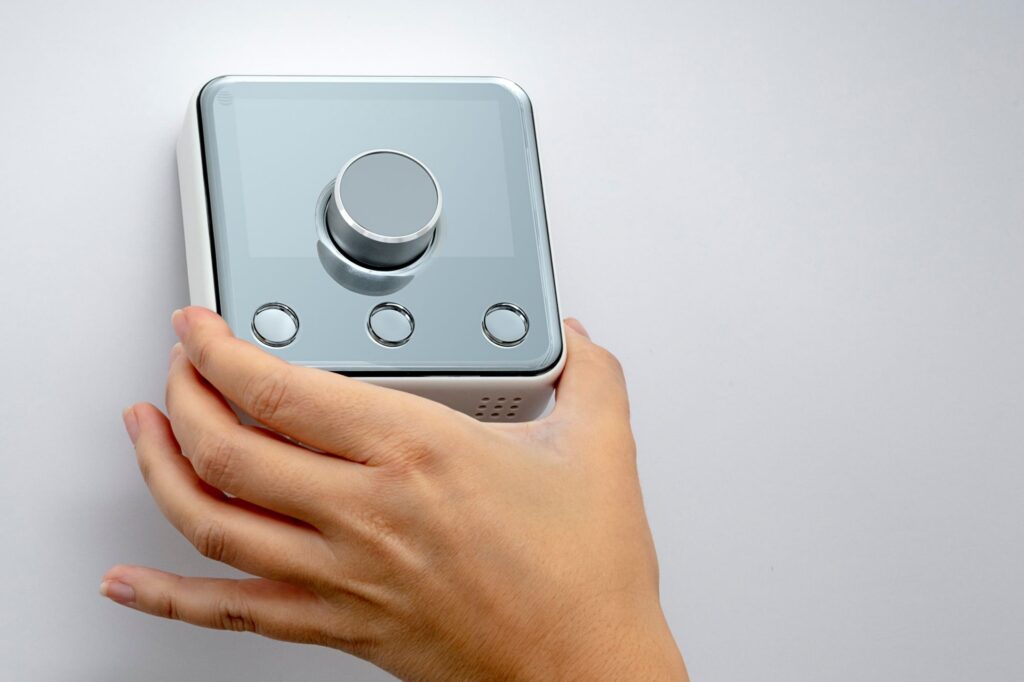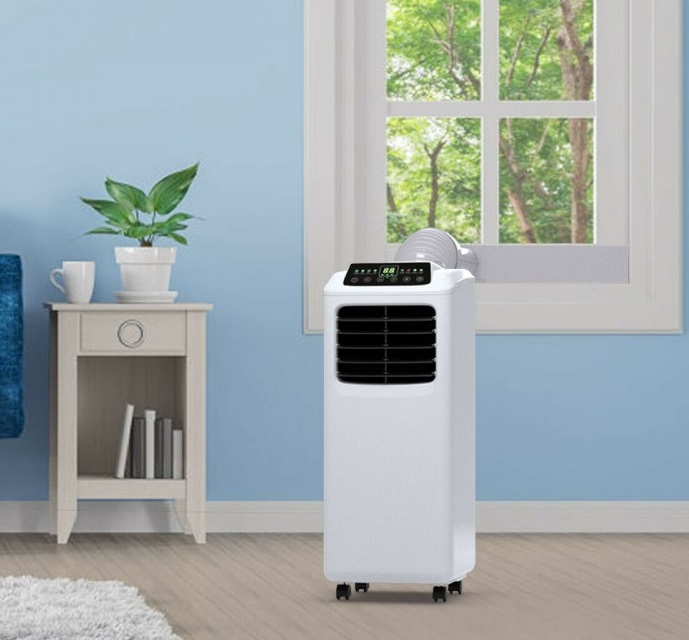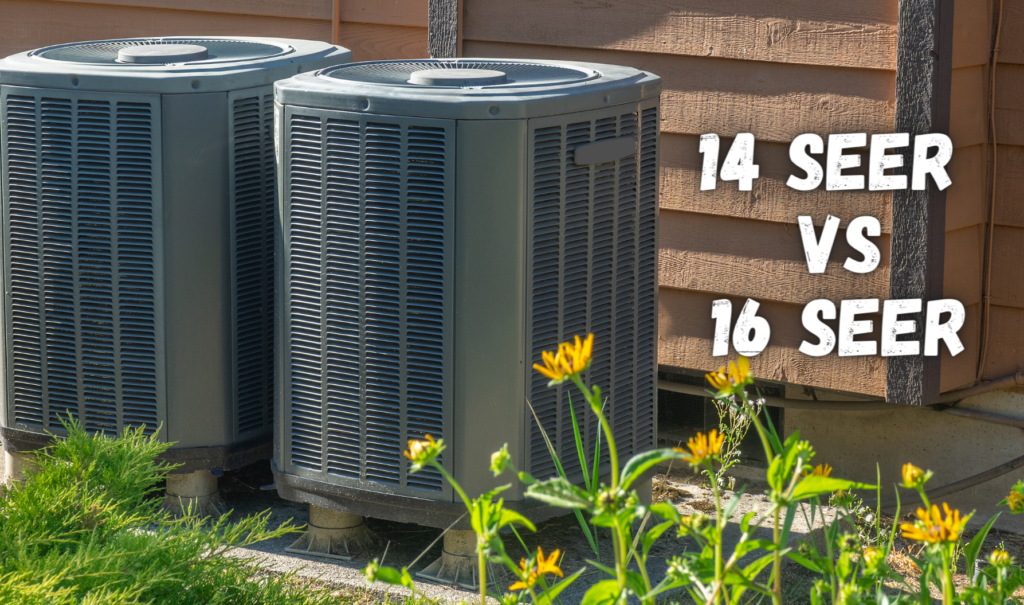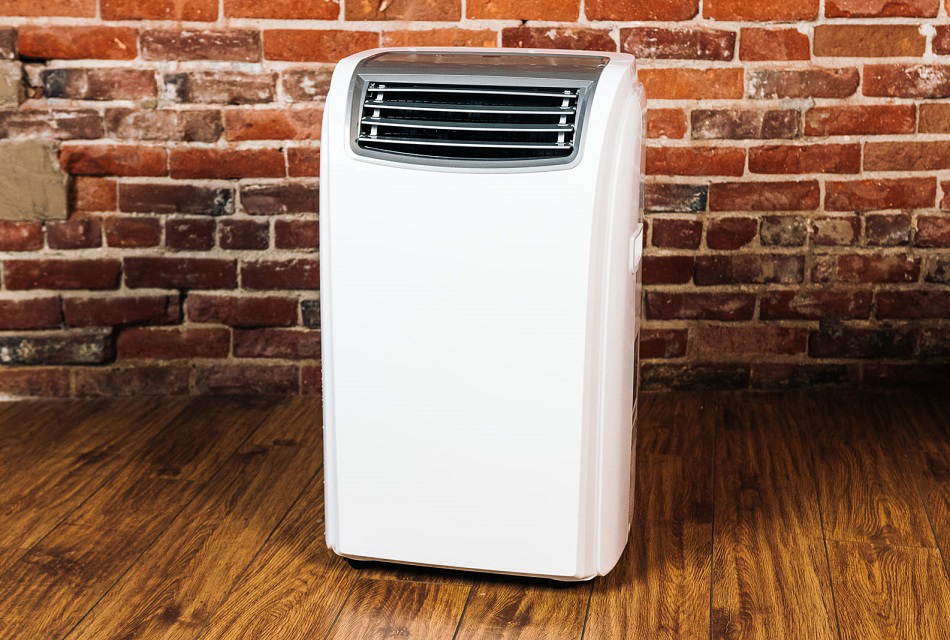

Like every other electronic device, a thermostat can require being replaced at some point. Frankly, you don’t need a technician to help you replace an old thermostat or check if the current one is malfunctioning if you have thermostat wiring skills.
With the right knowledge of thermostat wiring, you can get the job done yourself. However, this task is not a walk in the park but it’s far from impossible as you’ll soon learn. This article will tell you all about thermostat wiring, including safety precautions, required tools, where each color wire will go, most common wiring types, and more. Moreover, this guide is designed to save you some bills and you can trust it to do just that. Read on to learn more about thermostat wiring.
As a novice, there are some safety steps you must take to protect yourself when doing thermostat wiring. Below are some simple safety tips to follow:
You must understand the whole process of thermostat wiring before venturing into it so that you won’t ruin things or leave them worse than you met them.
Power off the thermostat as well as the linked HVAC systems and circuits at the breaker box.
Let other household members know that you’re about to be engaged in the thermostat’s wiring to ensure that they don’t flip any switch or breaker until you’re done.
Try to wear rubber gloves (high-voltage types) when working on the wires.
Lastly, consider using rubber-handled tools.
Of course, you’ll need certain instruments for a successful thermostat wiring session. While you may have some at home, others you’ll need to buy. Below are the essential instruments for thermostat wiring:
Without understanding the various thermostat wiring colors, you can’t do anything productive here. Thermostat wiring requires connecting the right wires to the right terminals on the back of the device. Below, we’ll explain the industry-standard thermostat wiring color code that applies to most systems out there:
The thermostat wiring diagram clearly shows the correct wiring colors for certain terminals and the purpose they serve. For example, the red wiring color connects to the ‘R’ terminal, the white wiring color connects to the ‘W’ terminal, the yellow wiring color connects to the ‘Y’ terminal, the green wiring color connects to the ‘G’ terminal, the orange wiring color connects to the ‘O’ terminal, and so on.
Even though the single pole wiring diagram is the most popular, there are others such as the double pole thermostat wiring diagram and the duo therm thermometer wiring diagram.
The blue wire is the C or “Common” wire. You ask us; what does it do? C wire connects to the transformer. Also, it completes the 24V electric circuit. In the newer thermostats, you’ll find that the blue wire connects to the “C” terminal. However, the “C” may be absent in the older thermostats because they’re not continuously running; they function only on-demand.
On the other hand, newer thermostats function all the time. If you had always wondered why the newer thermostats consume energy even when the air conditioner or furnace is not running, you have your answer now. However, that won’t affect the best energy-efficient space heaters thanks to their energy-saving functions.
There are two terminals for the white wire in a thermostat. Essentially, you can either be talking about the “W1” or W2” wire. The white wire is typically found in a gas furnace thermostat. While the “W” wire goes directly to the heating source, e.g. furnace or heat pump, “W2” is designed for 2-stage heating.
Since most heat pumps boast 2-stage heating, they require the “W2” wire. So, you can do furnace thermostat wiring without encountering a white wire.
The red or “R” wire is for power. It originates in the transformer and provides 24-hour volt AC power. You can as well call it the AC thermostat wiring. Moreover, air conditioner thermostats usually feature red wire. Also, dual transformer systems have Rh or Rc terminals although this is not a common case in thermostat wiring.
You’re probably wondering what the “O” and “B” represent. “O” represents an orange wire that works for reverse valve (Rv) cooling. The “B”, on the other hand, represents a dark blue wire that works for reverse valve (RV) heating.
Like white wire, the yellow wire can also have a “Y1” or “Y2” wire. Y terminal connects to the compressor relay. “Y1” is for 1-stage or ordinary cooling. As the “ordinary” suggests, “Y1” wire is the one you find in most homes.
“Y2” wire, on the other hand, is for second-stage cooling, although only a few air conditioners have that. Specifically, you only need the terminal if you have a 2-stage compressor.
A typical mini-split has an indoor air handler that features a fan. The green or “G” wire works for the fan and regulates its power input.
Now, let’s talk about other wires you may encounter in the process of thermostat wiring. Some of them include AUX C, AUX NC, and AUX NO. The AUX wires are used for auxiliary heating. Other wires include BK, ODT1, ODT2, RS1, and RS2.

You can’t go ahead with thermostat wiring without removing the control panel. Essentially, the removal of the thermostat control panel exposes the wires and grants you access to them. Thankfully, the removal is not a complicated task. The first thing to do is to turn off the thermostat. Then, you can go ahead with removing the control panel.
Besides, control panel designs vary depending on the brand. You can remove most panels by only nudging them above or below a bit. However, you may find screws on some Honeywell thermostats, for example. All you’ll need to do is unscrew such control panels to get access to their wire terminals.
After exposing the wires, you can now go ahead with placing all the wires
2-wire thermostat wiring—as the name suggests—needs two wires, including red wire for power and white wire for heating. You can only find this type of wiring in furnaces. As you might have expected, 2-stage thermostat wiring is straightforward because you don’t have a lot of wires to deal with. Use the following steps for thermostat wiring 2 wires:
3-wire thermostat wiring is typically used to control boilers and heaters. The 3 wires involved in this process have wiring codes R, W, and G. It’s easy to tell the difference between this kind of wiring and the 2-wire wiring with the inclusion of “G” or green wire in the former. We must also note that the green wire represents a repurposed “Common” or “C” wire.
While the red wire works for power (24V), the white wire that works for heating. Also, the green wire works as a repurposed “C” wire. This is how to go about 3-wire thermostat wiring:
The 4-wire thermostat wiring is typically found in heat pumps or HVAC devices that can heat and cool. The 4-wire thermostat color code includes a red wire that works for power (24V), a white wire—connected to a “W” or ”W1” terminal—that works for heating, a green wire that works for fan, and a yellow or sky blue wire—connected to a “Y” terminal—that works for cooling.
Wire a 4-wire thermostat following these steps:
The 5-wire thermostat wiring can be found in any HVAC device, including the best Amana heat pumps, furnaces, top air conditioners, etc. There’s not much difference between this kind of wiring and 4-wire wiring. The only difference between them is the presence of a “Common” or “C” wire in the 5-wire thermostat wiring.
Moreover, the 5-wire thermostat is unarguably the most versatile because it controls a lot of devices as we mentioned above. The 5-wire thermostat wiring color code includes a red wire that works for power (24V), a white wire that works for heating, a green wire that works for fan, a yellow or sky blue wire that works for cooling, and a black wire that works as “Common” or “C” wire.
Let’s tell you how to wire a 5-wire thermostat below:
The 7-wire thermostat wiring has the most number of wires. It is typically found in a heat pump or ventilation. The 7-wire thermostat wiring includes a red wire that works for power (24V), a white wire that works for heating, a green wire that works for fan, a yellow or sky blue wire that works for cooling, a blue or black wire that works as “Common” or “C” wire, an orange or dark blue wire that works for Rv cooling or Rv heating, and a brown wire for emergency heating.
Moreover, the 7-wire thermostat wiring diagram can help you understand the wiring better. So, how do you go about a 7-wire thermostat wiring? Find out below:
Thermostat wiring color code is not absolute because some brands tend to deviate from the industry standards. Below, we’ll help you understand thermostat wiring by brand:
Honeywell is a pretty popular and trusted thermostat brand. The brand is responsible for many thermostats, including the high-quality Honeywell Home RTH2300B1038. This particular model is programmable and boasts some classic features such as a backlit display, manual overrides, and accurate operation. Plus, it offers an accurate temperature control of +/- 1° F.
To learn how to do the Honeywell thermostat wiring, watch this video:
Dometic is another well-known brand in the thermostat industry. Amongst the brands’ most popular products is the Dometic 3316250.012 RV Thermostat. Featuring a Liquid Crystal Display, Green LED Mode Indicators, Indoor Temperature Display, Auto Fan, and more, this thermostat seems like the ideal choice for campers.
This video explains how to wire the Dometic 3316250.012 and other models. It also provides a clear Dometic RV thermostat wiring diagram that helps you further:
White Rodgers is a thermostat brand that is known for its high-quality products such as the White Rodgers 1F79-111 Heat Pump Thermostat. It’s a product you’ll want to consider for your heat pump thanks to its large, easy-to-read backlit display, adjustable room temperature calibration, and electronic temperature accuracy.
This video on White Rodgers thermostat wiring can help you learn how to wire the White Rodgers 1F79-111 Heat Pump Thermostat and other models:
Ecobee is one dominant brand in the smart thermostat category. You don’t believe us? The ecobee SmartThermostat is a good example of the brand’s exploits. The smart thermostat can detect your presence and automatically adjust the temperature to suit you when you’re home. This is a great feature that helps to adhere to the energy-saving tip Trusted Source Spring and Summer Energy-Saving Tips Tips for saving energy and money during the spring and summer. www.energy.gov of the US Department of Energy.
With this video explaining the ecobee thermostat wiring, dealing with the wiring of the ecobee SmartThermostat’s wiring and other models is easier:
Nest is another trusted brand in the smart thermostat category. One of the brand’s breakthrough smart thermostats is the Google Nest Learning Thermostat with a polished metal finish and high-resolution display. Plus, the smart thermostat automatically adjusts itself whenever you leave home to avoid heating or cooling an empty nest. This feature can lead to efficient energy-saving as encouraged Trusted Source How much energy could be saved by making small changes to everyday household behaviors? efficient energy-saving as encouraged assets.publishing.service.gov.uk by the UK Department of Energy & Climate.
Even though the Google Nest Learning Thermostat and other thermostat models are easy to install, the instructions in this video can make Nest thermostat wiring easier:
When it comes to smart thermostats, Emerson is not a pushover. This brand has introduced some cool thermostats—such as the Emerson Sensi Smart Thermostat—into the market. As several reviews suggest, the Emerson Sensei oozes high quality with smart features such as automatic temperature adjustment, geofencing, and remote access.
Besides, the Emerson Sensi is designed for easy installation. Notwithstanding, this video explains the sensei thermostat wiring to make your job easier:
As we mentioned at the beginning of this article, you don’t always need a technician for thermostat wiring but you’ll need to do things right to not mess up the whole thing. Below, we will explain some mistakes you must never make during thermostat wiring:
Of course, we’ve tried our best to explain the processes involved in thermostat wiring but that shouldn’t make you ignore the thermostat’s manual. The manual typically contains valuable information that can make your job much easier. So, endeavor to read it.
You’re replacing an old thermostat because it’s the only problem: we get it but you have to check the old wire too. Check the wire for burn marks or tears in the casing to be sure that it’s in good shape. If you find any tear, use the electric tape to cover it. This protects both you and the thermostat from avoidable future damage.
It’s not uncommon to buy wires separately from the thermostat. However, cutting them to fit in the base can cause you to cut them too short. If a wire is shorter than it should be, it won’t work. Therefore, you should try as much as you can to avoid inaccurate wire cutting; it saves you a few dollars!
One of our first instructions in this article is asking you to turn the fuse box off. This is not for any other thing but your safety. Turning the fuse box off is the most basic and important safety measure. Since you’ll be dealing with wires, you should not—at any point—leave the fuse box on.
Another mistake you must not make during thermostat wiring is not checking the thermostat type. What are we saying here? Try to always connect the right wire to the right terminal. If you don’t check and determine the thermostat type, you’ll have trouble connecting the wires to the right terminals.
Successful thermostat wiring requires understanding the color code and following the right steps. If you put only one wire in the wrong terminal, you won’t get any results. Hence, you must read this guide and understand it. Besides, you can’t be careless about your safety, so you should follow our safety advice strictly.
Also, there are common mistakes that you must not make during thermostat wiring or else, you’ll end up with a bad installation. Our guide is pretty comprehensive and touches everything you need to know about wiring your thermostat. Hence, you’ll be doing yourself a favor if you study it and even have it with you during the thermostat wiring.





